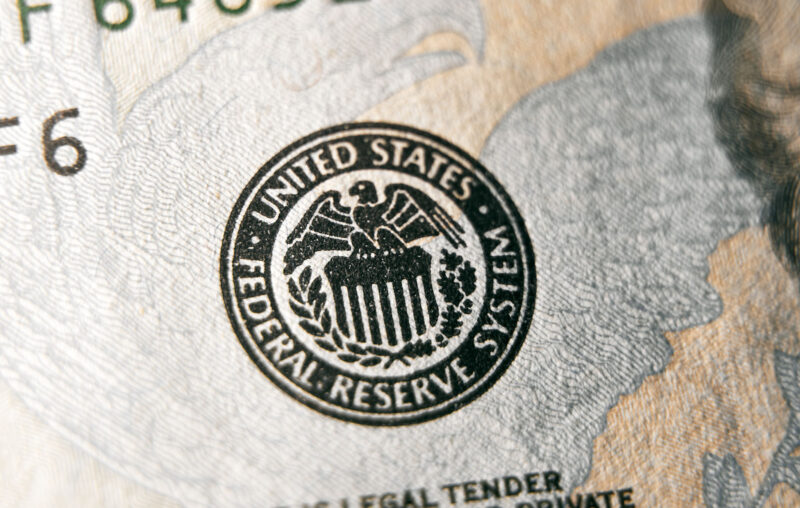Waller Explains Why the Fed is Still Raising Rates

At a recent event at New York University, Federal Reserve Board Governor Christopher Waller described the recent policy actions by the Fed, discussed his view of the lags between monetary policy changes and their effects on the economy, and explained how he sees monetary policy evolving for the rest of this year.
Governor Waller supported keeping the Fed’s policy rate constant in June. In his view, inflation and labor market conditions indicated the need for tighter monetary policy. However, given the bank failures in March, he was also concerned that raising the policy rate would negatively affect credit conditions. While he acknowledges little evidence of a credit crunch, he believed the prudent course was to wait another six weeks before raising the policy rate—as the Fed ultimately did.
This decision, Waller explains, was influenced by the most recent Summary of Economic Projections, which indicated two additional increases in the Fed’s policy rate before the year’s end were likely. Having already announced that it intended to raise rates further this year, he thought the Fed could afford to take a wait-and-see approach with credit market conditions. He also believed that the banking turmoil would naturally tighten credit conditions, reducing the pressure on the Fed to tighten monetary policy.
As Governor Waller explains, however, the turmoil in the banking system did not result in tighter credit conditions. Thus, he raised his terminal federal funds rate projection by 50 basis points. According to Waller, this example illustrates how appropriate monetary policy changes over time and the extent of uncertainty policymakers face in deciding the appropriate policy rate path.
This uncertainty, Waller argues, also affects policymakers’ expectations of the lags between changes in the policy rate and their effects on economic activity and inflation. According to Governor Waller, the rule of thumb is that these lags can range anywhere from 12 to 24 months. But tremendous uncertainty surrounds the lag length of a monetary policy shock.
To illustrate this point, Governor Waller provides an overview of how economists try to determine the speed and extent to which changes in monetary policy affect inflation and the economy. As Waller explains, economists use theory, historical data, and statistical techniques to estimate the immediate and long-run effects on the economy brought about by a policy shock. For example, Fed economists could use this type of analysis to determine how an increase in the federal funds rate affects real (i.e., inflation-adjusted) GDP in the near term and in the long run.
This analysis yields what economists call impulse response functions, which illustrate the dynamic effect of a policy shock. Typically, these functions all have a similar shape–namely, the policy shock has some small initial effect, then increases over time until its maximal effect and recedes thereafter, producing a hump-shaped series over time. How long it takes for such shocks to have their maximal effect is what economists mean when they refer to long and variable lags.
What can this analysis tell us about the Fed’s recent efforts to reduce inflation?
Governor Waller argues that while the standard approach yields interesting insights, it does not quite capture the challenges policymakers face. For one thing, according to Waller, Fed officials rarely try to surprise the public. That is, they typically communicate to the public about their intent to raise or lower the policy rate in the future. Announcing a rate hike in advance means that when the Fed actually raises rates, it is not a shock. The public “prices in” expected future policy changes. Assuming the Fed does what the public expects, a fully anticipated change in the policy rate should have no contemporaneous effect on the economy, as the public has already organized its affairs around the change. Thus, a change in policy occurs when the Fed announces a change in the policy rate, not when the rate actually changes.
To illustrate this point, Governor Waller points to the behavior of the yield on two-year Treasury notes between September 2021 and March 2022. Beginning in late 2021, Fed officials discussed raising the policy rate, and by March 2022, the two-year Treasury yield increased from 25 to 200 basis points, even though the Fed did not raise the policy rate by 200 basis points until August 2022. In other words, the public “priced in” a 200 basis point increase before the Fed actually raised the policy rate by that amount. Waller argues that the market’s response to Fed officials’ ongoing discussions regarding future policy rate increases reduced the lag effect of monetary policy by nearly six months.
Governor Waller points to another issue with the analytical toolkit that economists use to estimate the effects of policy shocks on inflation and the economy—namely, that the analysis assumes the magnitude of the shock is irrelevant. The statistical analysis generates estimates that imply the effects of the shock scale proportionally with its size but does not affect the timing of these effects. According to Waller, the implication that the magnitude of the shock does not influence its time path is untenable.
To support his contention, Waller points to what economists refer to as rational inattention—the notion that people have a limited amount of attention that they can allocate to processing new information. This idea implies that adjusting behavior in response to small fluctuations in interest rates and price is inefficient. As a result, people do not adjust their behaviors instantly to every small fluctuation in interest rates and prices. The implication is that from the economists’ perspective, they appear to respond sluggishly to such fluctuations.
As Governor Waller explains, however, the speed with which people respond to interest rate and price changes depends on the size of the changes. For example, one may not notice a small change in the price of gasoline—say, a penny or two per gallon—for some time. But a large change in the price of gas—say, $1 more per gallon—gets a lot of attention. It’s on the news. People are talking about it. A big change like that is difficult to miss. Thus, when large shocks occur, people notice and, hence, respond more quickly than they do when a small shock occurs; and empirical analysis that does not account for this asymmetry will yield misleading estimates of how big policy shocks affect inflation and the economy.
In Governor Waller’s view, the Fed’s efforts to tighten monetary policy are passing through to interest rates faster than many analysts expected via announcement effects. Moreover, because policy rate increases have been larger and faster than in the past, the public is quickly adjusting its behavior to policy changes. Waller contends that, taken together, these two effects mean that the Fed’s steps last year to tighten monetary policy will affect inflation and the economy much more quickly than the models and empirical evidence suggest. The upshot is that, in Waller’s opinion, most of the tightening that occurred last year has already affected inflation and the economy. As such, he believes the Fed should continue its efforts to tighten monetary policy, as inflation is still above the Fed’s two percent target.
Waller concluded by discussing the current economic data and its implications for monetary policy. He notes that GDP growth remains solid. He also notes that while the labor market appears to be normalizing somewhat, employment and wage growth remain too high to return to the Fed’s two percent inflation target. While Waller sees the recent slowdown in inflation as positive, he is not ready to declare victory as it is only a single data point. Finally, Waller notes that, despite the turmoil in March following the failure of Silicon Valley Bank, the banking system appears in good shape.
What does this data mean for monetary policy going forward?
Fighting inflation remains Governor Waller’s top priority. He is confident the Fed’s policy will get inflation back down to its two percent target but that they cannot be misled into thinking the job is done based solely on a single inflation report. In his view, the strength of the U.S. labor market and economy allows the Fed to continue tightening policy if necessary.










